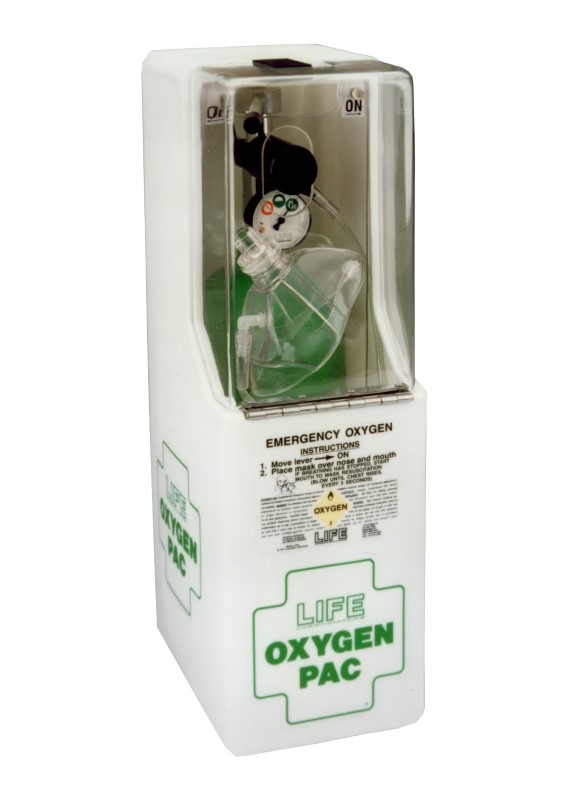Oxygen Equipment (Houston, TX)
Emergency Portable Oxygen
Why do we support Emergency Oxygen by Lay Responders?
Oxygen, when used for emergency purposes, is considered as an over-the-counter drug and is legally regulated as such, if and only if the cylinders have a regulator that controls the output of the oxygen to a minimum of 6 liter flow. This is obviously to exclude people who use oxygen for treatment purposes at a much lower liter flow, thus requiring a doctor’s prescription. All of our oxygen units have the required regulator of a minimum of 6 liter flow and are therefore considered over-the-counter and do not require a prescription. Our units are safe, easy to operate, and provide the proper low-level oxygenation needed before EMS arrives.

How does Emergency Oxygen relate to the Good Samaritan Law?
As you know, all lay responders are covered under Good Samaritan protection. As an additional level of protection, we offer managed programs that allow all of our clients can fall under our 2 Million Dollar Insurance Umbrella that extends to the use of our equipment. In the event there is a situation your company would be insulated from such an incident.
How long have we been providing Emergency Oxygen?
We have been in business for 25 years and have provided emergency oxygen successfully to corporations all over the country – we have as yet never had a negative complication using the oxygen equipment with any of our customers and, in fact, our oxygen has saved people’s lives and provided critical assistance during countless medical emergencies.
What are the benefits of Emergency Oxygen?
- Supplemental Oxygen is safe and easy to use, providing 100% oxygen to victims during a Medical Emergency. Our Oxygen Units help to stabilize the victim and combat tissue hypoxia which leads to anaerobic metabolism and metabolic acidosis.
- CPR without supplemental oxygen is only 4.6% successful if performed correctly (according to a study published in the J.A.M.A. (Journal of American Medical Association). This is because the air we breathe only has 20-21% oxygen which is not enough to be therapeutic.
- Unlike most portable oxygen units, our oxygen masks are equipped with one-way valves that allow the responder to give rescue breaths during CPR with the oxygen mask still on, reducing any unnecessary downtime. This provides 100% oxygen during resuscitation and also shields the responder from any vomiting that can occur from the patient during rescue breathing.

The American Red Cross, American Heart Association, and National Safety Council, as well as all of the major certification organizations, now teach a course on the use of emergency oxygen. All of these organizations recommend using oxygen in conjunction with CPR as soon as possible.
Oxygen immediately begins to halt and reverse the deleterious effects of shock to the brain and the other major vital organs. Breathing exhaled air into someone else's lungs cannot correct shock. Shock is the culprit that can lead to the death of an individual in a medical emergency.


What are the liability issues with Emergency Oxygen?
As a precursor to discussing liability, let’s address the current law on the books. Most people have understandable concerns about having supplemental oxygen, fire extinguishers, AED’s, or any variety of emergency response equipment at their facility. Oxygen requires a prescription; however, this is only true if the oxygen is for treatment purposes and not for emergency purposes. Oxygen is an over-the-counter drug and is available to the public for emergency purposes WITHOUT A PRESCRIPTION provided it has a regulator with a minimum of 6 liter flow. All of our units are equipped with minimum 6 liter flow regulators. This significantly changes the previous dynamic of ownership and liability.

